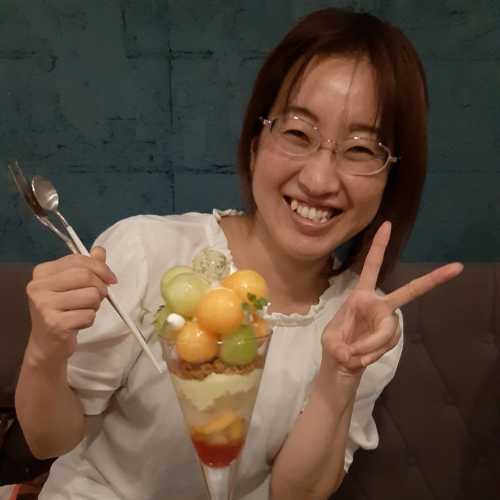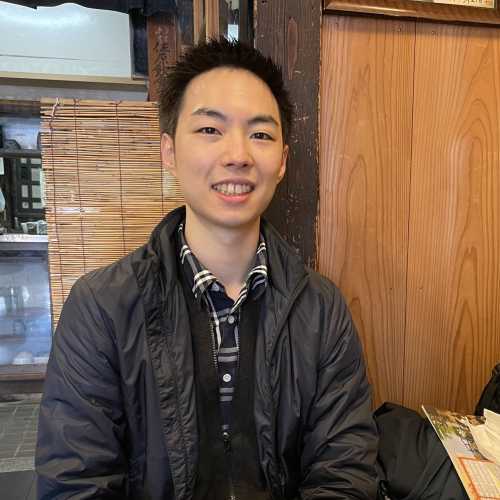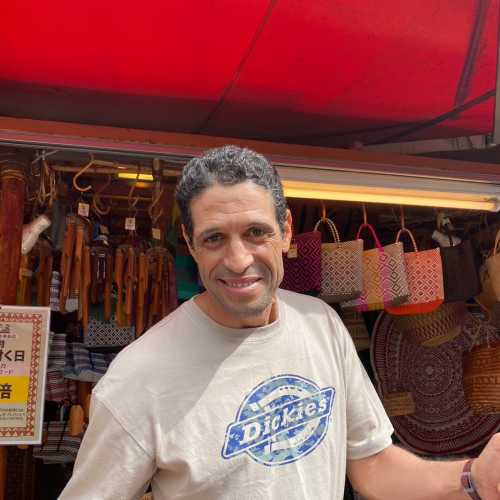Table Of Contents
- The Sacred Rhythm of New Year in Tokyo
- Coming of Age Day: Tokyo's Most Colorful January Celebration
- Winter Illuminations: When Tokyo Becomes a Winter Wonderland
- The Gentle Pleasures of Tokyo Food in January
- Special Events That Define January in Tokyo
- Tokyo Disney and Family Fun in January
- Practical Wisdom: Weather, Clothing, and January Planning
- Hidden Moments: Tokyo's Quiet January Pleasures
- Imperial Palace: January's Royal Connection
- Transportation and Practical Tokyo Navigation
- Art and Culture: January's Creative Side
- Evening Experiences and Night Culture
- Connecting with Tokyo Experiences
- February Planning and Beyond
- Final Reflections: Why January Matters
![[IMAGE: Snow-dusted lanterns at Meiji Shrine during New Year. Filename: shrine-snow-lanterns.jpg]]()
When people ask me what to do in Tokyo in January, I always pause and smile. January in Tokyo isn't just about bundling up against the cold, it's about witnessing our city at its most sacred and reflective. This is when Tokyo sheds its usual rushing pace and embraces something deeper, something that connects us to centuries of tradition.
I've lived in Tokyo my entire life, and January remains my favorite month to visit the places that make this city extraordinary. The winter air carries a different energy, one that invites contemplation rather than conquest. Let me share with you the gentle side of Tokyo in January, where every temple visit, every steaming bowl of ramen, and every quiet moment under snow-dusted eaves tells a story.
The Sacred Rhythm of New Year in Tokyo
![[IMAGE: Families in traditional dress walking towards Meiji Shrine gates at dawn. Filename: meiji-shrine-dawn-families.jpg]]()
New Year in Japan isn't just a celebration, it's a spiritual reset that transforms our entire city. The period from New Year's Eve through the first week of January feels like Tokyo is holding its breath, preparing for something sacred.
Visiting Shrines: The Heart of January Traditions
The practice of visiting shrines during hatsumode — the first shrine visit of the year — is perhaps the most beautiful example of how Tokyo honors its past while embracing its present. I visit Meiji Shrine every January, not because I must, but because it grounds me in something larger than the city's daily rhythm.
![[IMAGE: Meiji Shrine's main hall surrounded by snow-covered trees with visitors praying quietly. Filename: meiji-shrine-winter-prayers.jpg]]()
It becomes a pilgrimage site during January, welcoming millions who come seeking good fortune for the year ahead. The temple grounds transform into a living prayer, where families in traditional Japanese clothing walk alongside businesspeople in wool coats, all united in the same gentle hope for renewal.
What moves me most about visiting shrines in January is the quality of silence. Even with crowds, there's a reverence that settles over everything. The crisp air carries the sound of wooden clapping, the soft shuffle of feet on gravel, and whispered prayers that rise like breath in the cold.
Sensoji Temple: Where January Feels Ancient
![[IMAGE: Sensoji Temple's main hall with traditional lanterns glowing in winter twilight. Filename: sensoji-temple-winter-evening.jpg]]()
Sensoji Temple in Asakusa offers a different but equally profound January experience. Walking down Nakamise Shopping Street toward the temple, I'm always struck by how the food stalls and souvenir shops create a bridge between the sacred and the everyday.
The temple grounds in January pulse with quiet energy. Visitors come not just to pray but to participate in rituals that have remained unchanged for generations. Watching elderly Japanese grandmothers teach their grandchildren how to properly wash their hands at the purification fountain, I'm reminded that January in Tokyo is about continuity, the gentle passing of wisdom from one generation to the next.
Coming of Age Day: Tokyo's Most Colorful January Celebration
![[IMAGE: Young women in vibrant kimono walking through Yoyogi Park with winter cherry blossoms in background. Filename: coming-of-age-yoyogi-park.jpg]]()
The second Monday of January brings Coming of Age Day (Seijin no Hi), one of Tokyo's most visually stunning special events. As someone who experienced this ceremony myself years ago, I can tell you that it's more than just a photo opportunity; it's Tokyo celebrating its future.
Yoyogi Park: A Canvas of Tradition and Joy
Yoyogi Park becomes a living artwork during Coming of Age Day. Young adults in elaborate kimonos gather with friends and family, their silk garments creating splashes of color against winter's muted palette. I often visit the park during this event just to witness the joy, it's infectious and reminds me why January in Tokyo is so special.
![[IMAGE: Friends in traditional Coming of Age Day attire taking photos near Shibuya Station. Filename: coming-of-age-shibuya-celebration.jpg]]()
Near Shibuya Station, the celebration spills into the streets. Young people in formal wear celebrate this milestone while navigating one of Tokyo's busiest intersections, a perfect metaphor for how traditional Japanese culture moves seamlessly through our modern city.
Looking for a private city experience in Tokyo?
Explore the city with a local who plans a private day just for you; no groups, no scripts.
Winter Illuminations: When Tokyo Becomes a Winter Wonderland
![[IMAGE: Tokyo Midtown's illumination display with snow falling gently on visitors. Filename: tokyo-midtown-snow-illumination.jpg]]()
Tokyo's winter illuminations turn our city into something magical, but I want to share the quieter moments within these spectacular displays. Tokyo Midtown and Roppongi Hills certainly offer impressive light displays, but I find myself drawn to the spaces between the brightness, the benches where couples sit quietly, the children whose eyes reflect the lights, the elderly couples walking slowly through the glow.
Roppongi Hills: Art and Light in Winter
Roppongi Hills creates one of Tokyo's most sophisticated illumination experiences. The Mori Art Museum often coordinates special winter exhibitions that complement the outdoor displays. I visit here when I want to see how Tokyo balances its artistic ambitions with seasonal beauty.
![[IMAGE: Roppongi Hills illuminations viewed from above with Tokyo Tower glowing in distance. Filename: roppongi-hills-aerial-night-view.jpg]]()
From the observation deck, Tokyo spreads out like a constellation, reminding me that even in winter, our city pulses with life and light.
Shibuya Sky: Tokyo's Winter from Above
Shibuya Sky offers perhaps the most dramatic perspective of Tokyo in January. The city stretches endlessly in every direction, its lights creating patterns that shift with the night. On clear January evenings, I can sometimes see all the way to Mount Fuji, its snow-covered peak catching the last light of day.
![[IMAGE: Panoramic view of Tokyo's illuminated skyline from Shibuya Sky observation deck. Filename: shibuya-sky-winter-panorama.jpg]]()
The Gentle Pleasures of Tokyo Food in January
![[IMAGE: Steaming bowls of ramen at outdoor food stalls with customers warming their hands. Filename: winter-ramen-stalls-steam.jpg]]()
January food in Tokyo is about warmth, comfort, and seasonal specialties that exist nowhere else in the world. The ramen festivals that appear in Yoyogi Park and other locations aren't just about eating, they're about community gathering in the cold, sharing warmth both literal and metaphorical.
Ramen Festivals: Tokyo's Winter Gathering Places
These outdoor events create temporary communities where strangers become friends over steaming bowls. I love watching how food breaks down barriers, businesspeople in expensive coats standing next to students, all united by the simple pleasure of hot broth on a cold January day.
![IMAGE: Traditional oden pot at convenience store with various ingredients floating in broth. Filename: convenience-store-oden-winter.jpg]]()
Even our convenience stores become sources of winter comfort. The oden pots that appear during colder months offer a uniquely Japanese form of fast food, various ingredients simmered in savory broth, available 24 hours a day. There's something deeply comforting about stopping at a convenience store on a cold January night and finding this traditional winter meal waiting.
Special Events That Define January in Tokyo
Wrestle Kingdom: Tokyo's January Spectacle
Wrestle Kingdom at the Tokyo Dome brings a different energy to our January calendar. While it might seem at odds with the month's contemplative nature, I've come to appreciate how this event represents Tokyo's ability to celebrate both tradition and innovation.
When you visit Tokyo in January, you might catch glimpses of sumo wrestlers training for upcoming tournaments, discover outdoor activities that continue even in winter weather, or experience the magical midnight atmosphere during New Year's Eve when sumo wrestlers and other celebrities often attend special events. The connection between traditional sumo wrestlers and modern wrestling entertainment creates fascinating cultural moments that make outdoor activities like shrine visits feel particularly festive as the city welcomes visitors.
If you plan to attend Wrestle Kingdom, book tickets early, it become one of January's most popular special events. The venue is a short walk from Tokyo Station, where you'll find many shops on the ground floor of surrounding buildings. Come extra prepared for crowds, though the entrance fee includes access to one of Japan's most unique sporting spectacles.
![[IMAGE: Tokyo Dome illuminated at night with crowds gathering for Wrestle Kingdom. Filename: tokyo-dome-wrestle-kingdom-night.jpg]]()
Department Stores: January Sales and New Year Traditions
Tokyo's department stores transform during January, offering fukubukuro (lucky bags) that create their own festive atmosphere. These mystery packages represent a uniquely Japanese approach to New Year shopping, you buy a bag without knowing its contents, trusting in the year's good fortune.
![[IMAGE: Shoppers lined up early morning outside department store for fukubukuro lucky bags. Filename: department-store-lucky-bags-queue.jpg]]()
What if your day in Tokyo was planned by someone who knows it — and you?
City Unscripted matches you with a local host who creates a private experience based on your interests, not a set route.
Tokyo Disney and Family Fun in January
Tokyo Disney Resort offers a different perspective on January in Tokyo. While some might skip theme parks in winter, I find it during January to be a fun place that captures the season's magic without the overwhelming crowds of other months.
![[IMAGE: Tokyo Disneyland castle with winter decorations and light snow. Filename: tokyo-disneyland-winter-castle.jpg]]()
The parks become especially enchanting when light snow dusts the attractions, creating moments that feel suspended between reality and fantasy.
Practical Wisdom: Weather, Clothing, and January Planning
Understanding Tokyo's January Climate
Is Tokyo very cold in January? Yes, January is our coldest month, with temperatures typically ranging from 1°C to 10°C. The cold is dry rather than harsh, and we rarely see significant snow in central Tokyo. What makes January challenging isn't extreme temperatures but the way the cold settles into everything, the buildings, train stations, even our bones.
![[IMAGE: People in warm winter clothing walking through snow-dusted Tokyo streets. Filename: tokyo-winter-street-fashion.jpg]]()
What to wear in Tokyo in January?
Layering becomes essential. I recommend thermal base layers, a warm sweater, and a good winter coat. Tokyo's buildings are often well-heated, so you'll want to remove layers indoors. Comfortable, waterproof shoes are crucial, Tokyo's sidewalks can become slippery with even light snow or ice.
Are things open in Japan in January?
Most attractions reopen after January 3rd. The first few days of January see some closures as businesses observe New Year traditions, but major tourist sites, hotels, and restaurants return to normal schedules quickly.
Is 4 days in Tokyo too much?
Four days provides a wonderful introduction to Tokyo in January, allowing you to experience both traditional New Year observances and the city's modern attractions. You might visit Meiji Shrine and Sensoji Temple, explore Tokyo Tower and Shibuya Sky, and still have time for special events like illuminations or festivals.
Hidden Moments: Tokyo's Quiet January Pleasures
![[IMAGE: Small neighborhood shrine with snow-covered roof and single visitor praying. Filename: neighborhood-shrine-snow-prayer.jpg]]()
Beyond the famous attractions, January in Tokyo reveals itself in smaller moments. Neighborhood shrines where locals make quiet prayers, food stalls in residential areas serving hot drinks to commuters, the way snow transforms familiar streets into something mysterious and new.
Meguro River: Winter's Different Beauty
The Meguro River, famous for spring cherry blossoms, offers a completely different beauty in January. Without the crowds of cherry blossom season, the riverbank becomes a peaceful walking path where winter light reflects off the water and creates moments of urban tranquility.
![[IMAGE: Meguro River in winter with bare cherry blossom trees and peaceful walking path. Filename: meguro-river-winter-serenity.jpg]]()
Tip
We match you with the right host, not just any guide.Want to experience the real Tokyo with someone who lives there?
A fully private experience, planned and led by a local host who tailors the day to you
Imperial Palace: January's Royal Connection
The Imperial Palace takes on special significance during January. The New Year greeting on January 2nd allows the public to see the royal family, but I'm equally drawn to the palace's winter gardens. The Imperial Palace East Gardens remain open throughout January, offering spaces for reflection that feel removed from Tokyo's urban intensity.
![[IMAGE: Imperial Palace East Gardens with winter landscape and traditional bridges. Filename: imperial-palace-winter-gardens.jpg]]()
New Year's Eve at the Imperial Palace
New Year's Eve at the Imperial Palace area creates one of Tokyo's most dignified celebrations. Rather than the party atmosphere found elsewhere, this gathering feels ceremonial, connecting us to Japan's deeper traditions.
Transportation and Practical Tokyo Navigation
Tokyo Station becomes a particularly important hub during January. As one of our city's central connection points, Tokyo Station helps visitors navigate between traditional sites like the Imperial Palace and modern attractions throughout the city.
![[IMAGE: Tokyo Station's historic facade decorated for New Year with traditional elements. Filename: tokyo-station-new-year-decorations.jpg]]()
The Odakyu Line provides access to areas beyond central Tokyo, including day trips to places where winter shows itself more dramatically in snow-covered landscapes.
Art and Culture: January's Creative Side
The Mori Art Museum and other cultural institutions often schedule significant exhibitions for January, understanding that winter creates the perfect time for indoor contemplation. These special events complement January's outdoor festivals and religious observances.
![[IMAGE: Visitors viewing winter-themed art exhibition in modern Tokyo gallery. Filename: tokyo-winter-art-exhibition.jpg]]()
Ready to plan your perfect day in Tokyo?
Start your experienceEvening Experiences and Night Culture
Tokyo's night scene in January takes on a different character. Rather than the high-energy summer nightlife, January evenings invite slower pleasures, long dinners, quiet bars, the kind of conversations that unfold naturally in winter's extended darkness.
![[IMAGE: Cozy Tokyo restaurant interior with customers enjoying hot pot on winter evening. Filename: tokyo-winter-restaurant-interior.jpg]]()
Food Culture in January
Hot food becomes central to January social life. From street food stalls serving yakitori to restaurants specializing in hot pot, Tokyo's culinary delights adapt perfectly to winter's demands.
Connecting with Tokyo Experiences
For those seeking deeper connections with Tokyo during January, I recommend exploring authentic Tokyo experiences that go beyond typical tourist activities. These experiences allow visitors to engage with local customs and traditions in ways that standard tours cannot provide.
February Planning and Beyond
As January draws to a close, Tokyo begins preparing for February's different rhythms. The cherry blossoms are still months away, but February brings its own subtle seasonal shifts that winter visitors might celebrate before moving into spring.
Final Reflections: Why January Matters
January in Tokyo isn't about conquering a list of attractions or checking off must-see sites. It's about slowing down enough to notice how a city of thirteen million people can still create spaces for silence, reflection, and connection.
![[IMAGE: Solo traveler sitting peacefully on bench in Tokyo park with winter sunset behind. Filename: tokyo-winter-peaceful-moment.jpg]]()
When visitors ask me about the best things to do in Tokyo during January, I always return to this: allow yourself to be changed by the experience. Let January's contemplative energy guide your visit. Celebrate not just the special events and festivals, but the quiet moments between them.
Tokyo in January teaches us that winter isn't about enduring the cold — it's about finding warmth in unexpected places, beauty in seasonal rhythms, and connection in shared human experiences that transcend language and culture.
This winter wonderland exists not just in illuminations and snow, but in the gentle way Tokyo reveals itself when you take time to truly see it. January offers the perfect time to discover that our city's greatest magic lies not in its famous landmarks, but in its ability to make every visitor feel part of something larger, something that continues long after the winter ends and the first cherry blossoms begin to bloom.
For travelers planning longer stays or seeking year-round inspiration, our comprehensive guide on what to do in Tokyo covers attractions and experiences that extend far beyond the winter months.
Whether you're planning your first visit to Tokyo or returning to explore new depths of this remarkable city, January offers experiences that will stay with you long after you've returned home.
What if your day in Tokyo was planned by someone who knows it — and you?
City Unscripted matches you with a local host who creates a private experience based on your interests, not a set route.
Want to experience the real Tokyo with someone who lives there?
A fully private experience, planned and led by a local host who tailors the day to you











